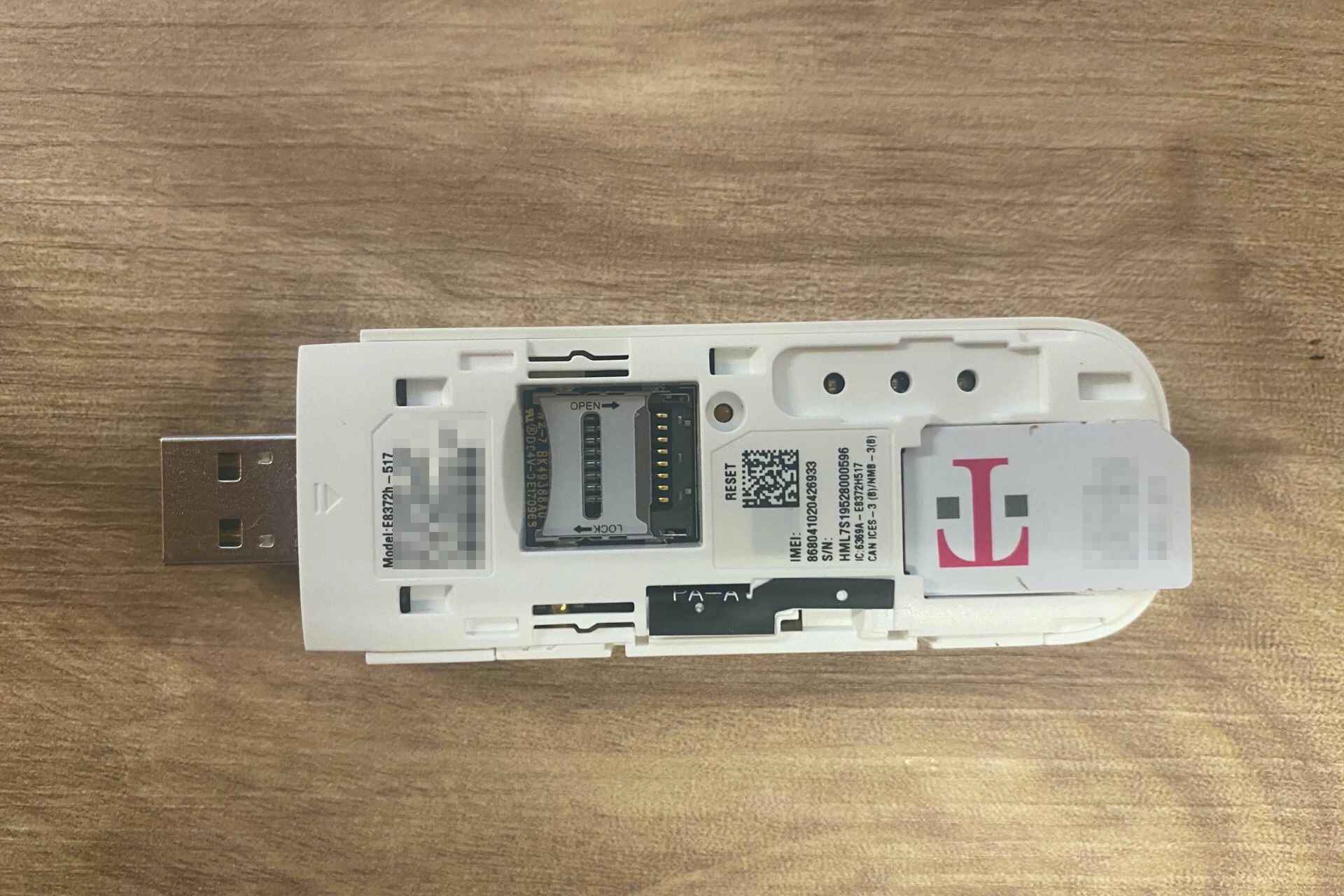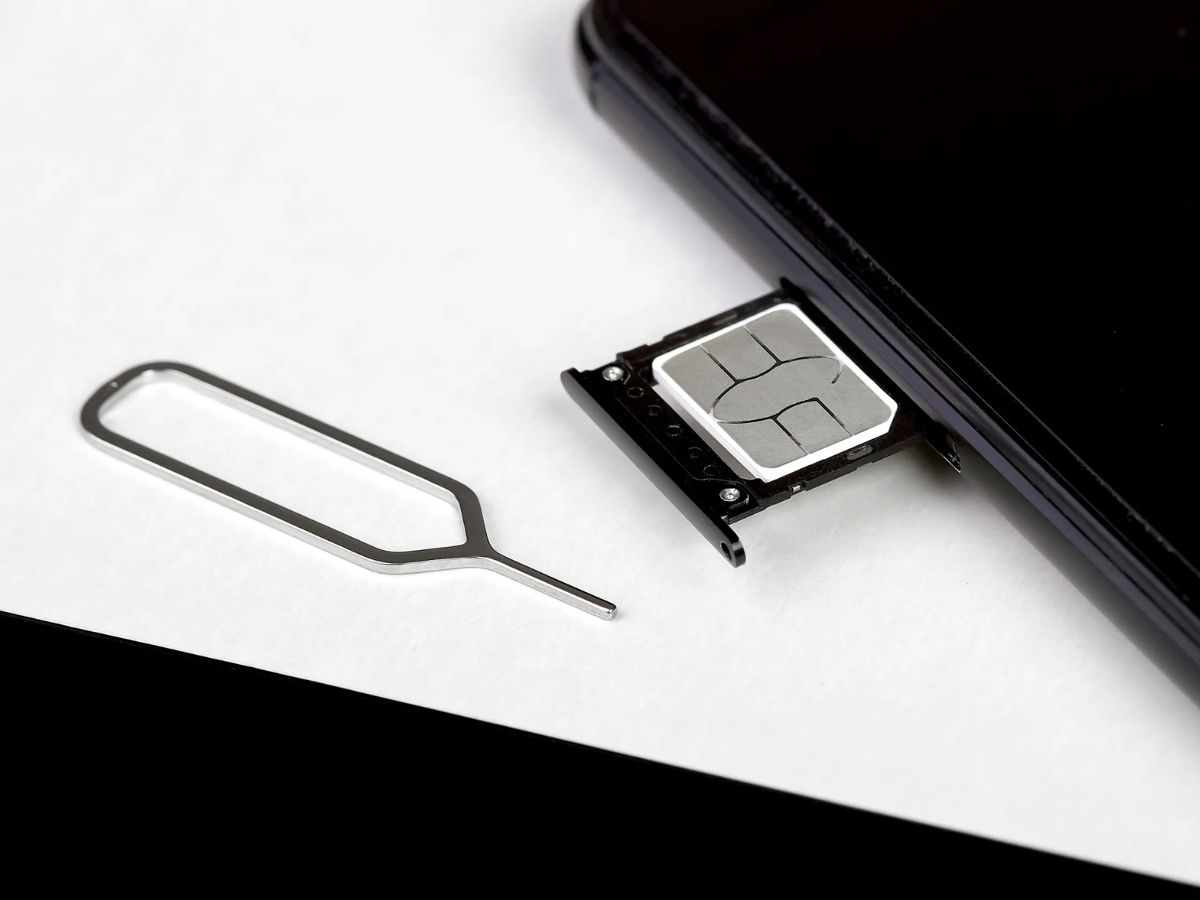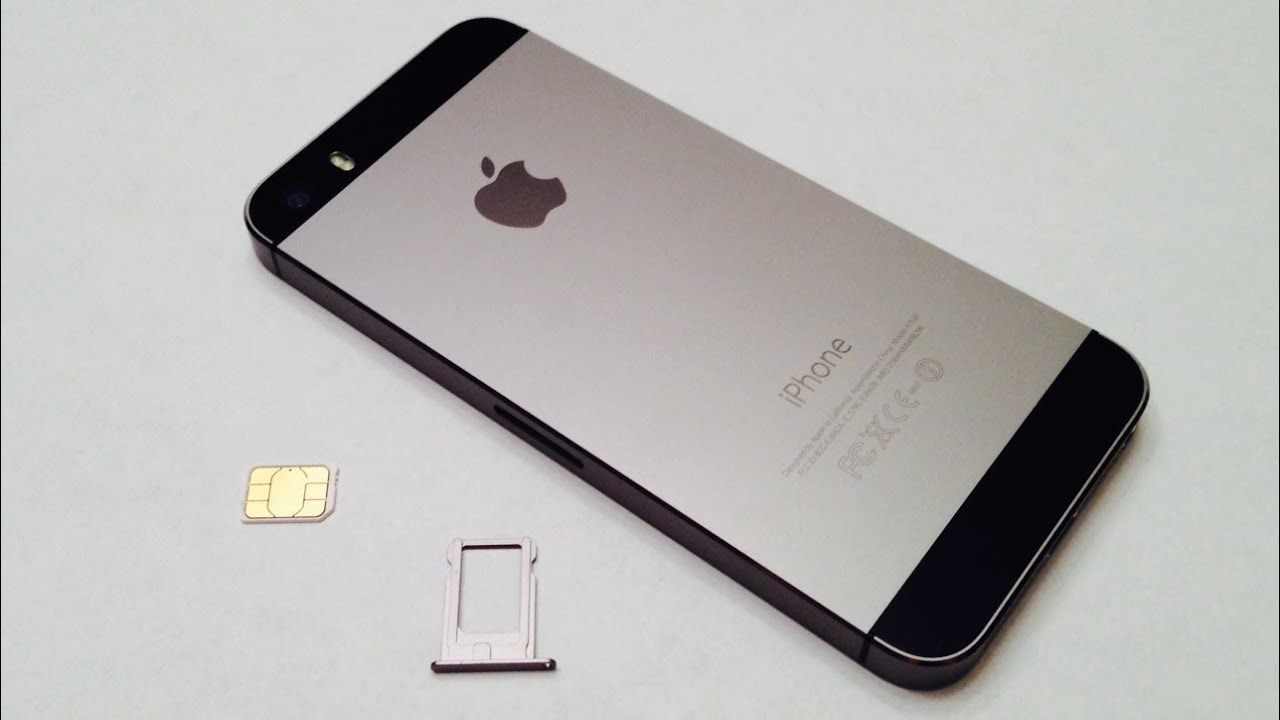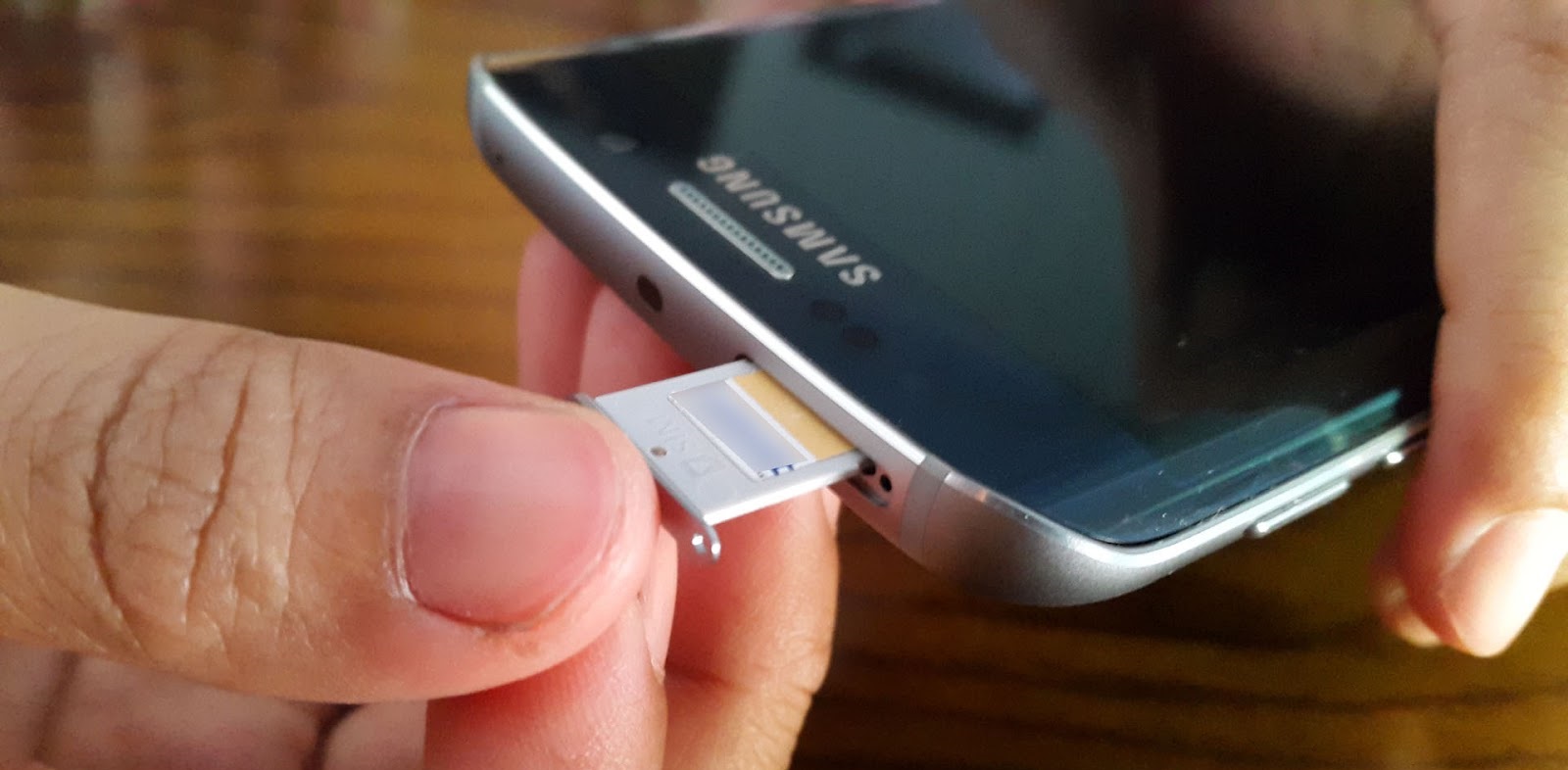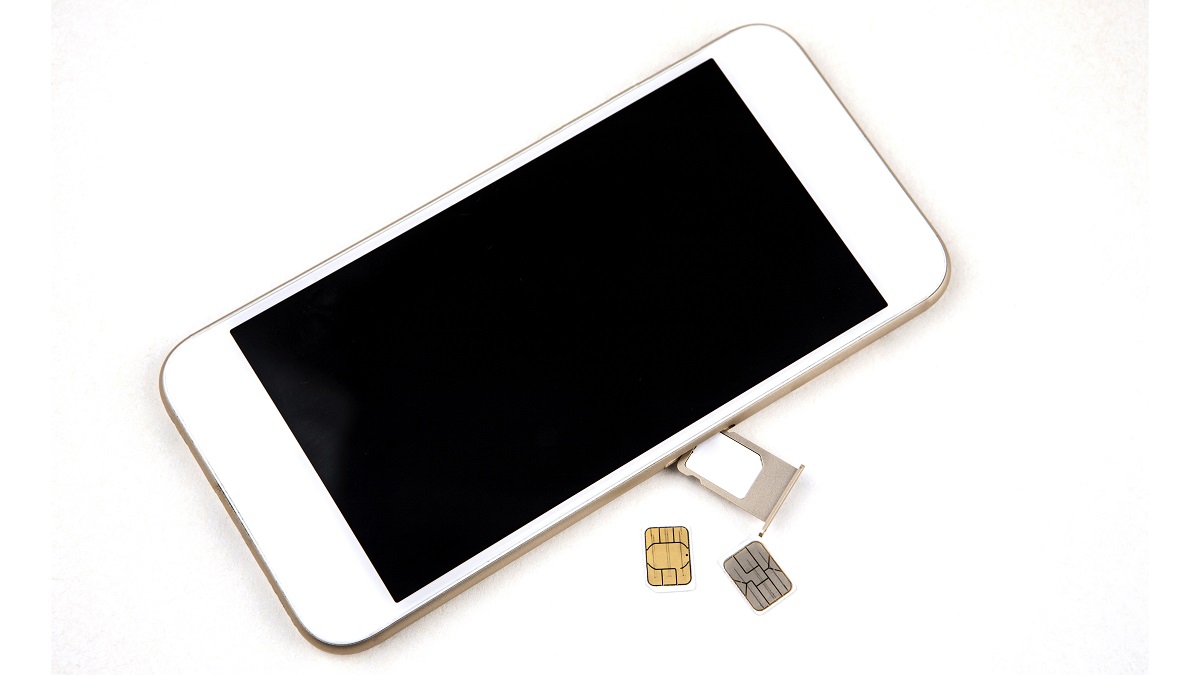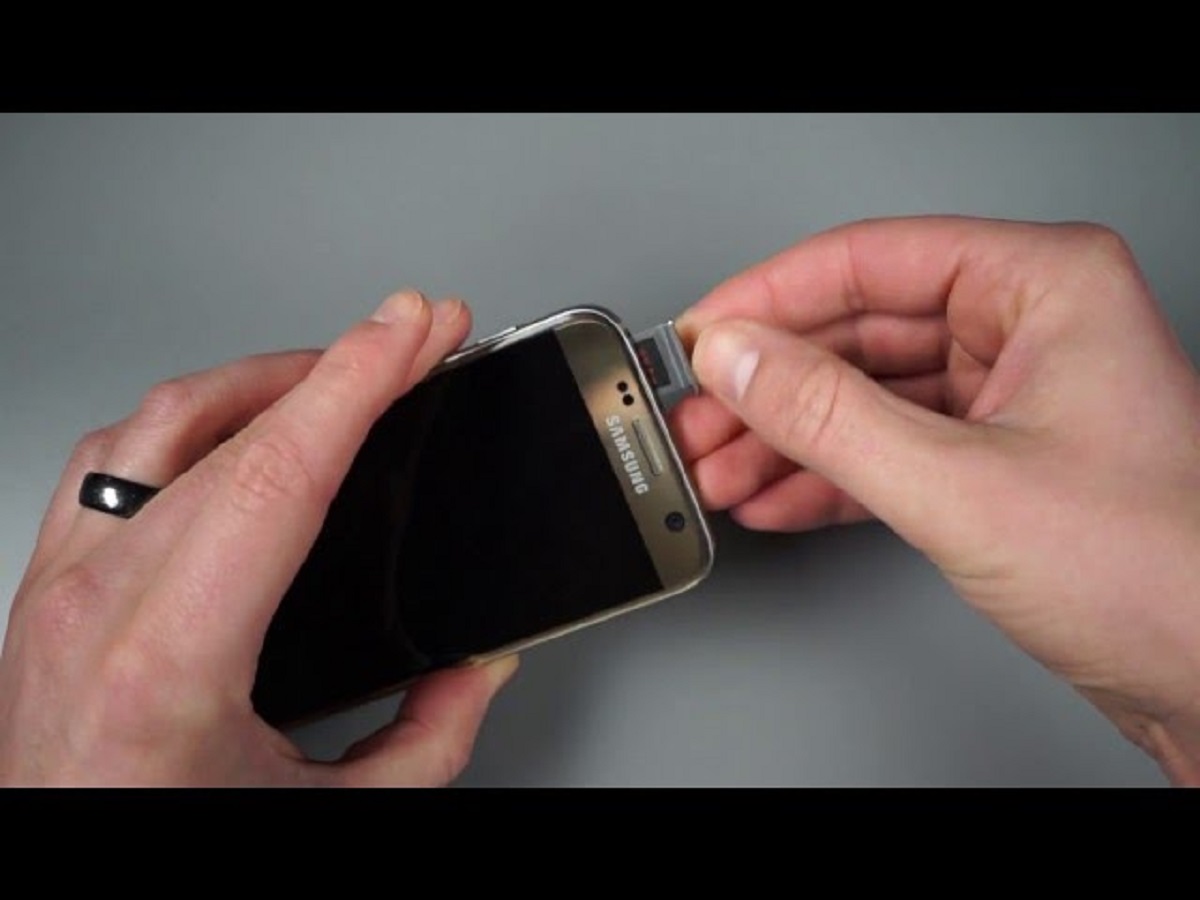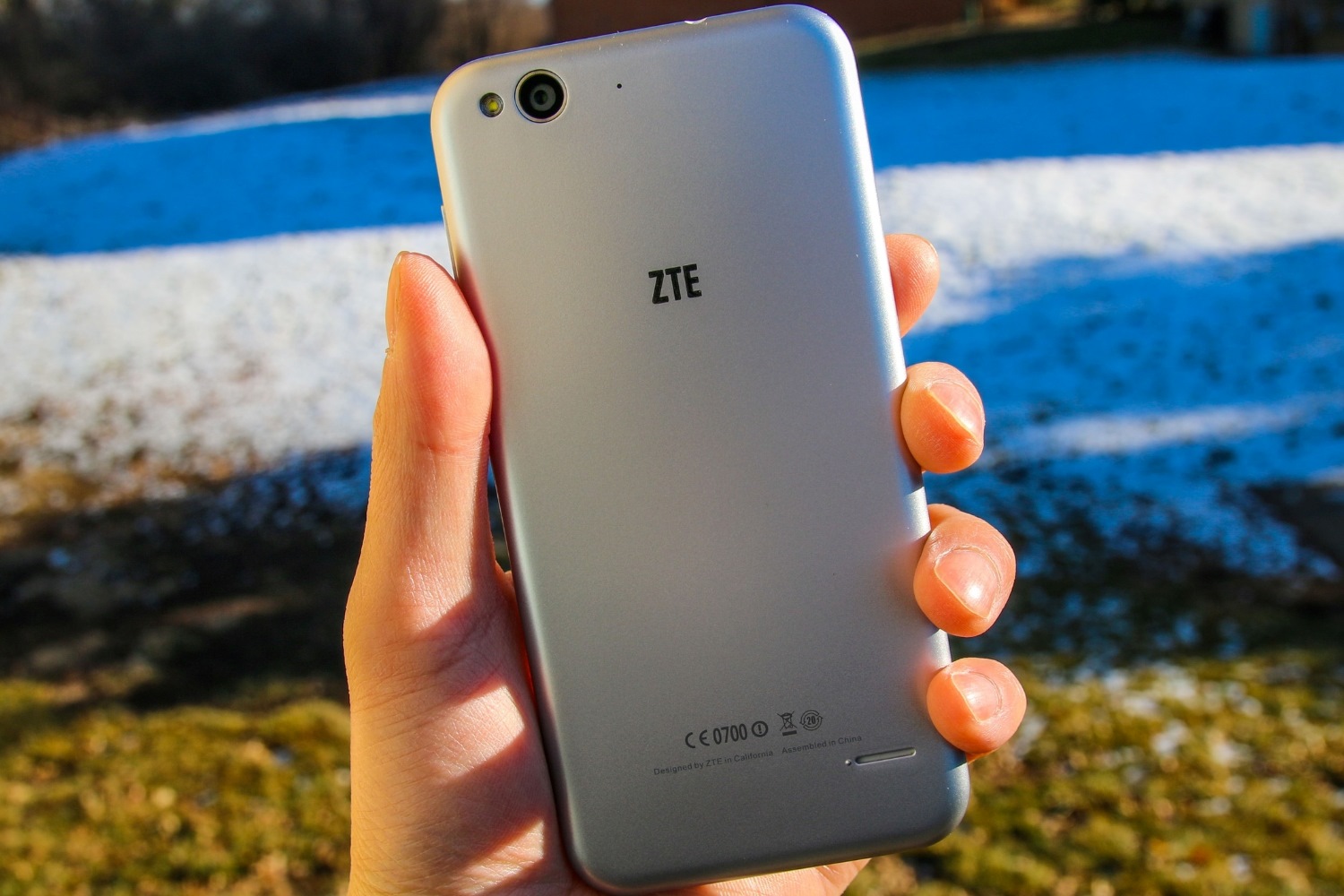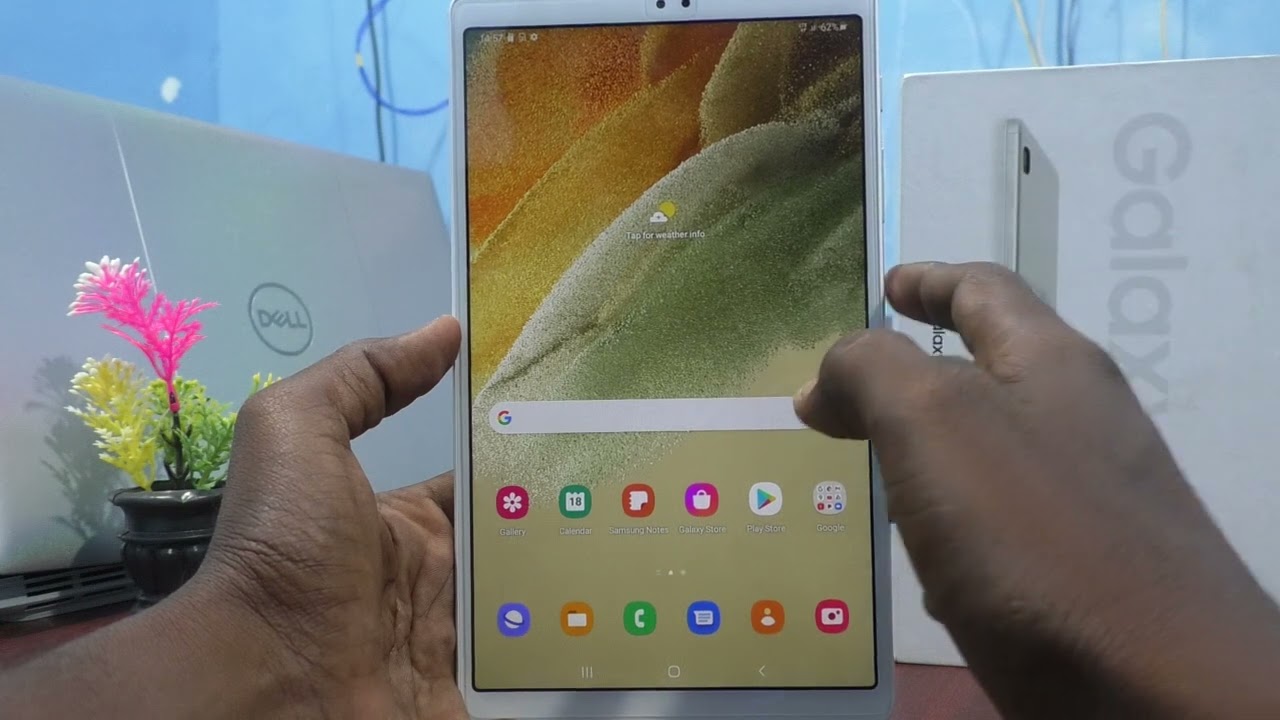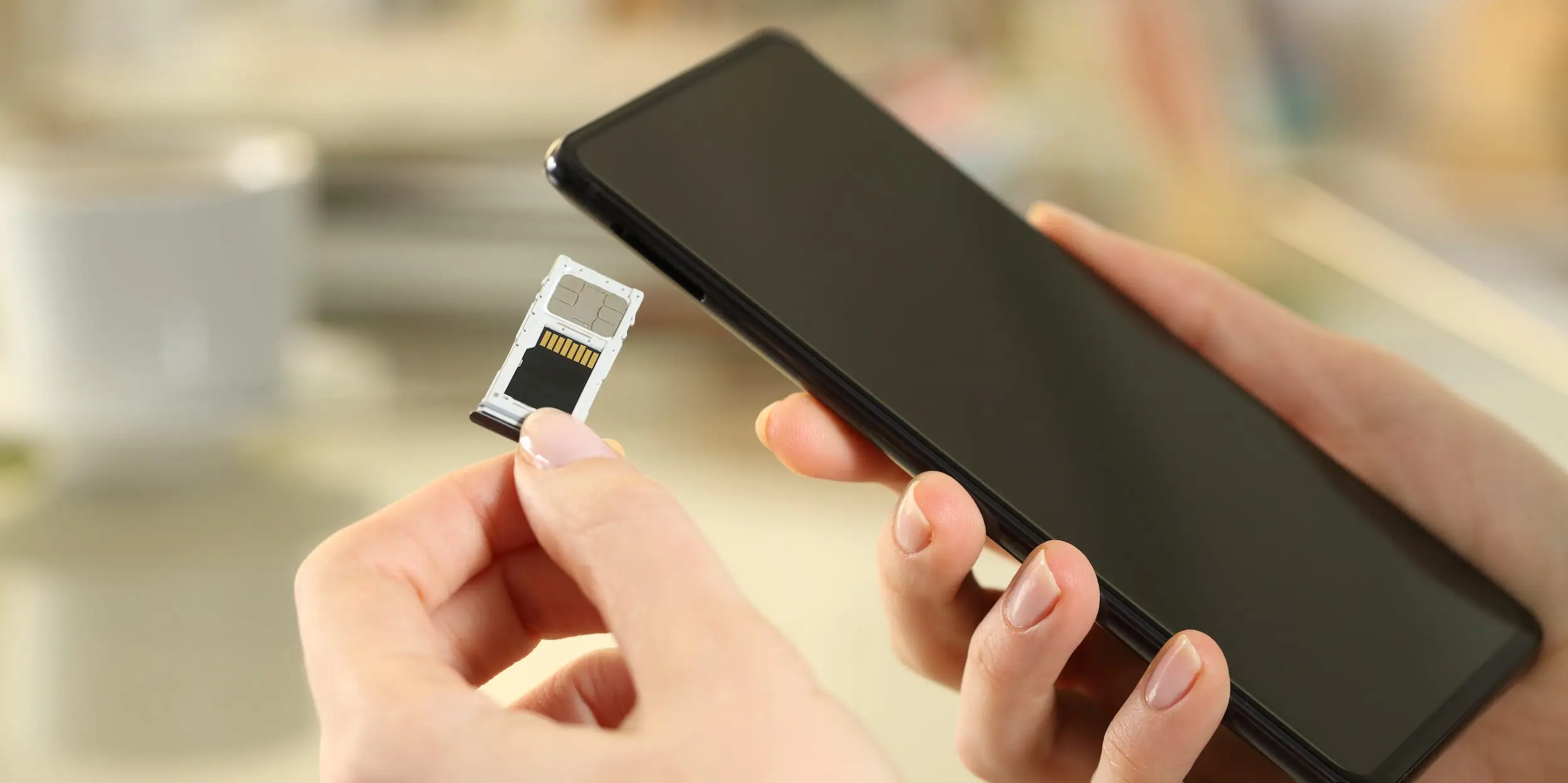Introduction
Inserting a SIM card into your mobile device is a fundamental step in setting up your phone for use. Whether you've just purchased a new phone or are switching to a different carrier, understanding how to properly insert a SIM card is essential. This small, yet crucial, piece of technology is what connects your device to your cellular network, enabling you to make calls, send texts, and access mobile data. In this comprehensive guide, we'll walk you through the process of inserting a SIM card into your device, ensuring that you can seamlessly transition to using your mobile device with your chosen carrier.
The steps outlined in this guide are designed to be user-friendly, allowing individuals of all experience levels to successfully complete the process. By following these instructions, you'll be able to confidently insert a SIM card into your device and enjoy uninterrupted access to your mobile network. Let's dive into the step-by-step process, ensuring that you have all the necessary information to successfully insert your SIM card and begin using your mobile device without any hiccups.
Step 1: Check Device Compatibility
Before inserting a SIM card into your device, it's crucial to ensure that your device is compatible with the SIM card provided by your chosen carrier. Different mobile devices support varying types and sizes of SIM cards, so it's essential to verify compatibility to avoid any issues during the insertion process.
-
Identify SIM Card Type: The first step in checking device compatibility is to identify the type of SIM card required for your device. There are three primary types of SIM cards: standard SIM, micro-SIM, and nano-SIM. Older devices typically use standard SIM cards, while newer models often require micro-SIM or nano-SIM cards. To determine the type of SIM card your device needs, consult the device manual or visit the manufacturer's website for specifications.
-
Review Carrier Requirements: Different carriers may have specific requirements for SIM card compatibility. When obtaining a SIM card from a carrier, ensure that it is compatible with your device's make and model. Additionally, some carriers offer SIM cards that are compatible with multiple device types, providing flexibility for users who may switch devices in the future.
-
Check Device Documentation: If you're unsure about the type of SIM card your device supports, refer to the device documentation, which often includes detailed information about compatible SIM card types and insertion methods. This documentation can typically be found in the user manual or on the manufacturer's website.
-
Utilize Carrier Resources: Many carriers provide online tools or customer support services to help customers determine device compatibility. Utilize these resources to confirm that the SIM card you have is suitable for your specific device. Additionally, carrier representatives can offer guidance on obtaining the correct SIM card if needed.
By thoroughly checking the compatibility of your device with the SIM card, you can avoid potential issues such as improper fit or connectivity problems. This proactive approach ensures a smooth and successful SIM card insertion process, setting the stage for seamless connectivity and mobile usage.
Ensuring that your device is compatible with the SIM card is the first step toward a successful insertion process. Once you've confirmed compatibility, you can proceed with confidence to the next steps of powering off your device and locating the SIM card slot.
Step 2: Power Off Your Device
Before proceeding with the SIM card insertion process, it's essential to power off your mobile device. This step is crucial for ensuring the safety of both the device and the SIM card, as well as preventing any potential disruptions during the insertion process.
Powering off your device is a straightforward process, and it varies slightly depending on the make and model of your mobile device. Here are the general steps to power off your device:
-
Locate the Power Button: The power button is typically located on the side or top of the device. It may be labeled with a power icon or the word "Power."
-
Press and Hold the Power Button: To initiate the power-off sequence, press and hold the power button until the on-screen options for powering off the device appear. This action prompts the device to begin the shutdown process.
-
Select "Power Off": Once the power-off options are displayed on the screen, select the "Power Off" or "Turn Off" option to confirm the shutdown. Depending on the device, you may need to swipe or tap a confirmation button to complete the process.
-
Wait for the Device to Power Off: After confirming the power-off command, wait for the device to fully shut down. This is indicated by the screen turning off and the device no longer responding to touch or button input.
-
Ensure Complete Shutdown: To verify that the device is powered off, check for any indicator lights or screen activity. If the device remains on, repeat the power-off process to ensure a complete shutdown.
Powering off your device before inserting the SIM card is essential for preventing potential damage to the device and the SIM card itself. It also minimizes the risk of any technical issues that may arise from attempting to insert the SIM card while the device is powered on. By following this important step, you can proceed with confidence to the next phase of the SIM card insertion process.
With your device safely powered off, you are now ready to locate the SIM card slot and proceed with the next steps to insert the SIM card securely and effectively.
Step 3: Locate the SIM Card Slot
Locating the SIM card slot on your mobile device is a crucial step in the process of inserting a SIM card. The SIM card slot is designed to securely hold the SIM card and establish the connection between your device and the cellular network. Depending on the make and model of your device, the location of the SIM card slot may vary, but it is typically found in a designated area on the device's exterior.
Here are the general steps to locate the SIM card slot on your mobile device:
-
Consult the Device Manual: If you are unsure about the location of the SIM card slot, refer to the device manual or user guide provided by the manufacturer. These resources often include detailed diagrams and instructions for locating and accessing the SIM card slot.
-
Examine the Device Exterior: Begin by visually inspecting the exterior of your device. Look for a small tray or compartment that may house the SIM card slot. The slot is often accompanied by a small pinhole or slot for ejecting the SIM card tray.
-
Check the Device Edges: Many mobile devices have the SIM card slot located along the edges of the device. Carefully run your fingers along the edges to feel for a small opening or tray that may indicate the presence of the SIM card slot.
-
Use a Flashlight if Needed: In some cases, the SIM card slot may be positioned in a recessed area or covered by a protective panel. If the slot is not immediately visible, use a flashlight to illuminate the edges and corners of the device, making it easier to identify the location of the SIM card slot.
-
Look for SIM Card Icons: Some devices feature small icons or labels near the SIM card slot to indicate its location. These visual cues can help you quickly pinpoint the area where the SIM card should be inserted.
By carefully following these steps and utilizing the resources available, you can successfully locate the SIM card slot on your mobile device. Once you have identified the slot, you can proceed with confidence to the next phase of the SIM card insertion process, ensuring that the SIM card is securely and correctly placed within the device.
With the SIM card slot located, you are now ready to progress to the next step of inserting the SIM card into your device, establishing the vital connection between your device and the cellular network.
Step 4: Insert the SIM Card
Now that you have successfully located the SIM card slot on your device, it's time to proceed with the critical step of inserting the SIM card. Properly inserting the SIM card ensures a secure connection between your device and the cellular network, enabling you to make calls, send texts, and access mobile data. Follow these detailed steps to insert the SIM card into your device with precision and confidence:
-
Prepare the SIM Card: Before inserting the SIM card, ensure that it is oriented correctly. Most SIM cards have a notched corner or a specific shape that aligns with the SIM card slot. Identify the correct orientation by matching the shape of the SIM card with the corresponding outline or guide within the SIM card slot.
-
Use the Ejection Tool: If your device features a SIM card tray with a small ejector pinhole, use the provided ejection tool or a paperclip to gently press into the pinhole. This action will release the SIM card tray from the device, allowing you to access the slot where the SIM card will be inserted.
-
Place the SIM Card: Carefully position the SIM card on the designated area within the SIM card tray, ensuring that it aligns with the guides and notches to fit securely. Take note of any markings on the tray or device that indicate the correct positioning of the SIM card.
-
Insert the SIM Card Tray: Once the SIM card is in place, gently slide the SIM card tray back into the device, ensuring that it fits smoothly and securely. Avoid using excessive force, as the tray should slide into place with minimal resistance.
-
Power On Your Device: With the SIM card securely inserted, power on your device to initiate the connection process. The device will recognize the SIM card and establish the necessary network connections, enabling you to access voice, text, and data services.
By following these detailed steps, you can confidently insert the SIM card into your device, setting the stage for seamless connectivity with your chosen carrier. Properly inserting the SIM card ensures that your device is ready to access the cellular network, allowing you to stay connected and enjoy the full functionality of your mobile device.
With the SIM card securely in place, you have successfully completed the essential process of inserting the SIM card into your device. Your device is now ready to be powered on, establishing the vital connection to the cellular network and enabling you to enjoy uninterrupted communication and mobile connectivity.
Step 5: Power On Your Device
Powering on your device after inserting the SIM card is the final step in the process of establishing connectivity with your chosen carrier's network. By following these detailed instructions, you can ensure that your device recognizes the newly inserted SIM card and initiates the necessary procedures to establish network connections. Here's a comprehensive guide on how to power on your device after inserting the SIM card:
-
Press and Hold the Power Button: Locate the power button on your device, typically located on the side or top. Press and hold the power button until the device's screen lights up and the startup sequence begins. Depending on the device, you may also feel a slight vibration or hear an audible cue indicating that the device is powering on.
-
Wait for the Startup Sequence: After initiating the power-on process, wait for the device to complete its startup sequence. This may involve displaying the device manufacturer's logo, an animated startup screen, or a loading indicator. The startup process may take a few moments, so allow the device to complete its initialization.
-
Enter PIN or Unlock Code (if applicable): If your SIM card is associated with a PIN or unlock code for added security, the device may prompt you to enter this code after powering on. Enter the required code to unlock the SIM card and allow the device to establish network connections.
-
Network Registration: Once powered on, the device will begin the process of registering with the cellular network using the inserted SIM card. This involves establishing a secure connection with the carrier's network and verifying the SIM card's credentials to enable voice, text, and data services.
-
Signal and Network Status: After powering on, observe the device's signal and network status indicators. These may appear as signal bars, network icons, or status messages on the device's screen. The presence of a strong signal and network connectivity indicators confirms that the device has successfully recognized and connected to the carrier's network.
-
Verification and Connectivity: Verify that the device is able to make calls, send texts, and access mobile data. Place a test call, send a text message, and attempt to access a website or application to ensure that the device is fully connected and operational with the newly inserted SIM card.
By following these detailed steps to power on your device after inserting the SIM card, you can ensure that the device successfully recognizes the SIM card and establishes the necessary network connections. With the device powered on and connected to the carrier's network, you are now ready to enjoy seamless communication and mobile connectivity, fully leveraging the capabilities of your mobile device.
Conclusion
Successfully inserting a SIM card into your mobile device is a fundamental step that paves the way for seamless connectivity and mobile usage. By following the comprehensive guide outlined in this article, you have gained the necessary knowledge and confidence to navigate the process of inserting a SIM card with precision and ease. From checking device compatibility to locating the SIM card slot, and from inserting the SIM card to powering on your device, each step is essential in ensuring a smooth transition to using your mobile device with your chosen carrier.
Understanding the compatibility of your device with the SIM card, as well as the specific type of SIM card required, is the initial crucial step. By carefully reviewing device documentation, consulting carrier resources, and verifying compatibility, you can avoid potential issues and ensure a seamless insertion process. This proactive approach sets the stage for a successful transition to using your device with the desired carrier.
Powering off your device before inserting the SIM card is a critical safety measure that protects both the device and the SIM card from potential damage. By following the outlined steps to power off your device, you can ensure a safe and controlled environment for the SIM card insertion process, minimizing the risk of technical issues or damage to the device.
Locating the SIM card slot on your device is an essential step that sets the stage for the successful insertion of the SIM card. By carefully examining the device exterior, consulting the device manual, and utilizing visual cues, you can confidently identify the location of the SIM card slot, ensuring that the SIM card is securely and correctly placed within the device.
Properly inserting the SIM card into your device ensures a secure connection with the cellular network, enabling you to access voice, text, and data services. By following the detailed steps to prepare the SIM card, use the ejection tool, place the SIM card, and insert the SIM card tray, you can confidently complete the insertion process, setting the stage for seamless connectivity with your chosen carrier.
Finally, powering on your device after inserting the SIM card is the final step in establishing connectivity with the carrier's network. By following the comprehensive guide to power on your device, you can ensure that the device successfully recognizes the SIM card and initiates the necessary procedures to establish network connections, allowing you to enjoy uninterrupted communication and mobile connectivity.
By following each step outlined in this guide, you have equipped yourself with the knowledge and confidence to successfully insert a SIM card into your mobile device, setting the stage for seamless connectivity and mobile usage. Whether you are setting up a new device or transitioning to a different carrier, the process of inserting a SIM card is now within your grasp, allowing you to fully leverage the capabilities of your mobile device for communication and connectivity.







